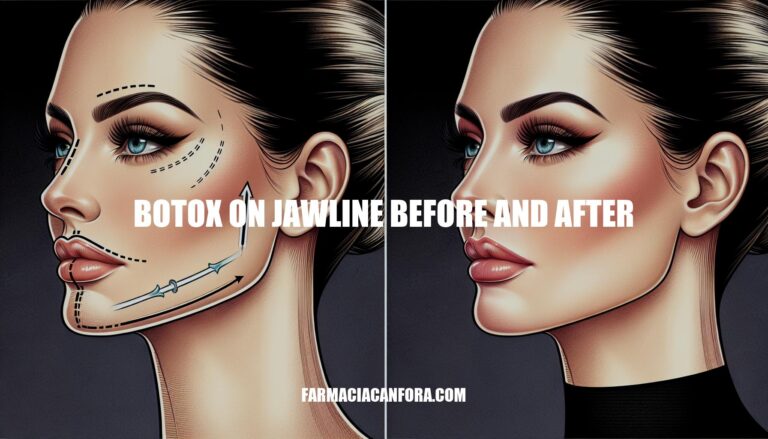


Botox on the jawline is becoming increasingly popular for both cosmetic and medical reasons. People opt for this procedure to achieve a slimmer, more contoured jawline and to alleviate issues like teeth grinding and temporomandibular joint (TMJ) disorder. The treatment involves injecting Botox into the masseter muscles, which helps relax and reduce their size, leading to a more defined facial appearance.
Botox is a neurotoxin derived from the bacterium Clostridium botulinum. It temporarily paralyzes muscles by blocking nerve signals that cause muscle contractions.
For jawline enhancement, Botox is injected into the masseter muscles (the muscles used for chewing). This reduces muscle size, leading to a slimmer, more defined jawline.
The ‘before and after’ results typically show a noticeable reduction in the width of the jawline, giving a more sculpted and balanced facial appearance.
Here’s a concise overview of the process for getting Botox on the jawline:
Consultation: Start with a consultation with a qualified professional. They will assess your facial structure, discuss your goals, and determine if you’re a suitable candidate.
Preparation: Avoid blood-thinning medications and alcohol for at least a week before the procedure to minimize bruising. Stay hydrated and maintain a healthy diet.
Injection Procedure: The professional will inject Botox into the masseter muscles on each side of your jaw. This process is quick and relatively painless.
Immediate Aftercare: Avoid touching or massaging the treated area. Keep your head upright and avoid strenuous activities for the rest of the day.
Long-Term Aftercare: Results typically last 3 to 6 months. Follow the aftercare instructions provided by your professional and schedule regular maintenance treatments to maintain the desired jawline.
Consulting with a qualified professional is crucial to ensure the procedure is tailored to your specific needs and to achieve the best results safely.
Before Botox:
After Botox:
Patient Experiences:
Using Botox on the jawline offers several benefits:
Improved Facial Aesthetics: Botox can slim and contour the jawline, creating a more defined and attractive facial profile. This treatment can help achieve a smoother, more youthful appearance by reducing the size of the masseter muscles.
Reduced Muscle Tension: Botox relaxes the masseter muscles, which can alleviate tension and discomfort in the jaw area. This is particularly beneficial for those who experience muscle tightness or pain due to overactivity of these muscles.
Relief from Bruxism: Botox is effective in treating bruxism (teeth grinding) by weakening the masseter muscles, thereby reducing the force of grinding and clenching. This can prevent tooth damage, reduce jaw pain, and improve overall dental health.
Potential Side Effects and Risks of Botox on the Jawline:
Common Side Effects:
Serious Risks:
Importance of Professional Administration and Aftercare:
Professional Administration:
Aftercare:
Always consult with a licensed and experienced professional for Botox treatments to ensure safety and effectiveness.
Botox on the jawline is a popular treatment that offers several benefits, including improved facial aesthetics, reduced muscle tension, and relief from bruxism.
The procedure involves injecting Botox into the masseter muscles to relax and reduce their size, leading to a slimmer, more defined jawline. Before Botox, the jawline often appears square or bulky due to enlarged masseter muscles, while common issues include teeth grinding, clenching, TMJ pain, and headaches.
After Botox, patients experience a significant reduction in jaw tension and pain, as well as improved facial symmetry and a more youthful look. However, potential side effects and risks of Botox on the jawline include:
It is essential to consult with a licensed and experienced professional for Botox treatments to ensure safety and effectiveness.